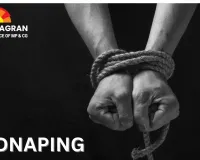Manipur's Endless Ethnic Turmoil 2025: A Humanitarian Catastrophe Unfolding
Digital Desk

In the misty hills of Manipur, October 2025 brings no respite from the ethnic inferno that has engulfed the state since May 2023, displacing over 60,000 and claiming hundreds of lives. Fresh clashes between Meitei and Kuki-Zo communities have killed at least 11 more, turning villages into battlegrounds and testing India's federal resolve. For common people—farmers, students, and traders caught in the crossfire—this is no abstract conflict; it's a daily siege on survival.
Roots of Rage: Land, Identity, and Impunity
The violence reignited in September when armed groups clashed over protected forest encroachments, with Meitei militias accused of arson in Kuki areas. Human Rights Watch reports document over 200 deaths since inception, including targeted killings and sexual violence, yet accountability remains elusive.
In my opinion, the BJP-led government's polarizing policies—like pushing Meitei Scheduled Tribe status—have fueled distrust, as echoed in The Hindu and Scroll.in analyses. Common Kukis, fearing demographic swamping, arm themselves, while Meiteis decry "separatism," trapping innocents in a vicious cycle.
Government's Response: From Denial to Delay
Chief Minister N. Biren Singh's administration faces accusations of bias, with security forces allegedly favoring Meiteis, per UN Human Rights Committee reviews. Protests erupted in Imphal after a legislator's arrest, clashing with police and exposing governance fractures. I contend that deploying neutral central forces and fast-tracking peace talks—as urged by Crisis Group—could stem the bleed, but political will lags, prioritizing optics over outreach.
Daily Struggles: Displacement and Despair Among the Masses
For ordinary Manipuris, the toll is visceral: schools shuttered, markets empty, and aid convoys looted. Over 36,000 Kukis huddle in relief camps sans sanitation, breeding disease amid monsoons, reports India Today. Women and children suffer most, with trauma compounding physical hardships. In my view, this crisis amplifies Northeast India's marginalization, where 70% rely on subsistence farming disrupted by strife.
Pathways to Peace: Reconciliation Over Retribution
India must empower local dialogues, invest in joint development boards, and repeal divisive laws, drawing from successful Mizoram models. Civil society, including church-led initiatives, offers hope. As winter looms, ignoring Manipur risks a generational scar. Time for Delhi to heed the hills' cry for equity and end.


2.jpg)
2.jpg)
.jpg)





.jpg)
